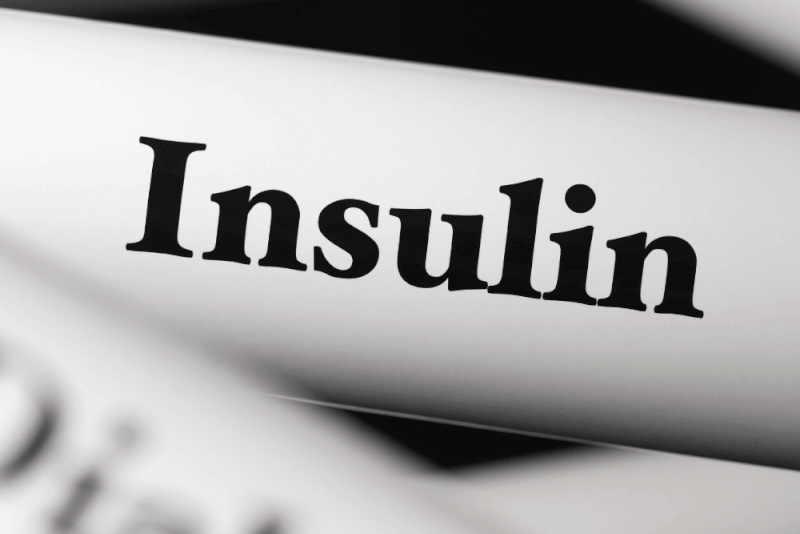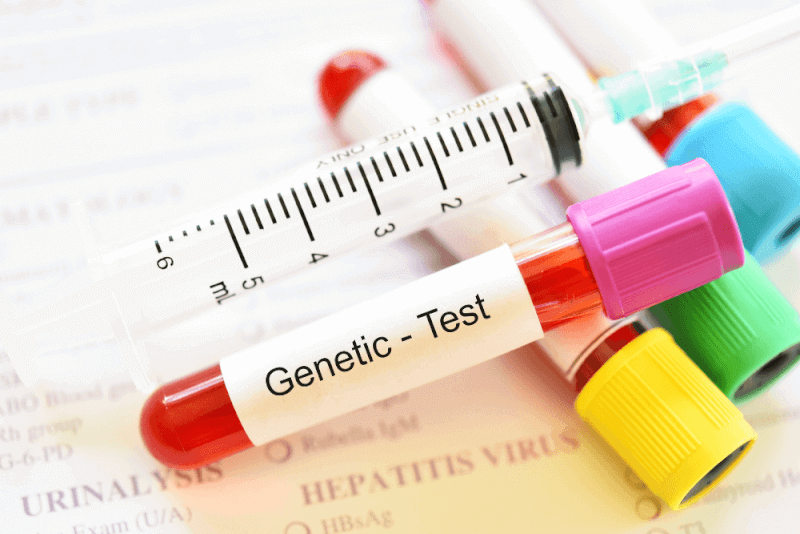What is Insulin Resistance?
Also known as impaired insulin sensitivity, insulin resistance occurs when the cells in muscles, fat, and the liver do not respond properly to insulin, a hormone produced by the pancreas that regulates blood sugar levels essential for life. Insulin resistance can be temporary or chronic.
Under normal conditions, insulin works in the following steps:
- The body converts food into glucose, the main source of energy.
- Glucose enters the bloodstream and signals the pancreas to release insulin.
- Insulin helps glucose enter muscle, fat, and liver cells so that these cells can use it for energy or store it for later use.
- Once glucose enters the cells and blood glucose levels decrease, the pancreas stops producing insulin.
For various reasons, muscle, fat, and liver cells may not respond properly to insulin. This means that glucose is not efficiently taken up or stored. As a result, the pancreas produces more insulin to overcome the increased blood sugar levels, a condition known as hyperinsulinemia.
As long as the pancreas can produce enough insulin to overcome the resistance, blood sugar levels remain in a healthy range. However, if the cells become highly resistant to insulin, blood sugar levels rise, eventually leading to prediabetes and type 2 diabetes.
In addition to type 2 diabetes, insulin resistance is associated with several conditions, including:
- Obesity
- Non-alcoholic fatty liver disease
- Polycystic ovary syndrome
- Cardiovascular disease
- Metabolic syndrome
Diagnosis of Insulin Resistance
There is no single test for diagnosing insulin resistance, and as long as the pancreas produces enough insulin to overcome the resistance, no symptoms are seen. Since there is no single test that can directly diagnose insulin resistance, doctors consider various factors when evaluating it, including:
- Patient's medical history
- Family history
- Physical examination
- Signs and symptoms
- Results of various tests
Tests that can be applied to evaluate insulin resistance include:
- Fasting plasma glucose (FPG) or glucose tolerance test (GTT) to diagnose and monitor gestational diabetes, prediabetes, and type 2 diabetes.
- Glycated hemoglobin (A1C) test to measure average blood glucose levels over the past three months.
- Lipid panel to measure specific lipids such as total cholesterol, LDL cholesterol, HDL cholesterol, and triglycerides in the blood.
In addition to these tests, experts may also request tests to help diagnose other conditions related to insulin resistance, such as metabolic syndrome, polycystic ovary syndrome, or cardiovascular disease.
Symptoms of Insulin Resistance
As long as the pancreas increases insulin production to keep blood sugar levels within a certain range, no symptoms are seen in insulin resistance. However, over time, insulin resistance may worsen, and the insulin-producing cells in the pancreas may become exhausted. Eventually, the pancreas cannot produce enough insulin to overcome the resistance, causing blood sugar levels to rise and symptoms to appear. Symptoms of high blood sugar include:
- Increased thirst
- Frequent urination
- Slow-healing cuts and wounds
- Vaginal and skin infections
- Headaches
- Blurred vision
- Increased hunger
Some people may not experience any symptoms for years, but signs of prediabetes and type 2 diabetes may start to appear. Symptoms of prediabetes and type 2 diabetes include:
- Darkening of the skin in areas such as the armpits, neck, back, and sides, known as acanthosis nigricans
- Skin tags
- Eye changes that can lead to diabetic retinopathy
Causes of Insulin Resistance
Not all information on how insulin resistance develops is fully understood. Several factors have been identified that can increase or decrease the likelihood of developing insulin resistance. Older people are generally more prone to insulin resistance. Various factors and conditions can cause insulin resistance to varying degrees. Excess body fat, particularly around the waist, and lack of physical activity are known to be the two main factors contributing to insulin resistance.
Treatment of Insulin Resistance
Since factors such as age and genetics that can cause insulin resistance cannot be treated, the primary treatment for insulin resistance is lifestyle changes. Lifestyle changes that patients should make include:
A Healthy Diet
Doctors or nutritionists recommend avoiding excessive amounts of carbohydrates and eating less unhealthy fats, sugar, red meat, and processed starches. Instead, a diet consisting of more vegetables, fruits, whole grains, fish, and lean poultry is recommended.
Physical Activity
Regular and moderate-intensity physical activity can increase the use of glucose for energy. It also helps improve muscle insulin sensitivity. A single session of moderate-intensity exercise can increase glucose uptake by at least 40%.
Maintaining Ideal Weight
Being at an ideal weight is one of the reasons for insulin resistance. Therefore, losing excess weight is recommended in the treatment of insulin resistance. Studies have shown that individuals who lose 7% of their current weight reduce the onset of type 2 diabetes by 58%.
These lifestyle changes over time will lead to the following changes:
- Reduction of insulin resistance
- Lowering of blood sugar levels
- Reduction in blood pressure
- Reduction in bad cholesterol levels
- Increase in good cholesterol levels
Medications Used in the Treatment of Insulin Resistance
Although there is currently no specific medication that can treat insulin resistance, experts prescribe various medications to treat accompanying conditions. These medications include:
- Medication to regulate blood pressure
- Metformin for diabetes
- Statins to lower bad cholesterol
Nutrition for Insulin Resistance
The impact of diet on blood sugar and insulin levels is significant. Highly processed, high-carbohydrate, and high-fat foods require more insulin to be secreted. In general, consuming foods with low to moderate glycemic index and limiting foods with high glycemic index can help reverse or manage insulin resistance. Eating foods rich in fiber also helps regulate blood sugar levels as it takes longer for the body to digest fiber, causing blood sugar levels to rise more slowly.
The glycemic index (GI) is a measure that ranks carbohydrate-containing foods based on their effect on blood sugar levels. Generally, they are classified as low, medium, or high. Pure glucose is typically used as a reference at 100.
- Low glycemic index: 55 or less
- Medium glycemic index: 56 to 69
- High glycemic index: 70 or more
High glycemic index foods generally contain a lot of carbohydrates and sugar, with little or no fiber. Low glycemic index foods typically have lower amounts of carbohydrates and higher amounts of fiber.
Examples of high glycemic index foods include:
- White bread
- Fruits like watermelon and dates
- Potatoes
- Cakes and cookies
- Breakfast cereals
Examples of low glycemic index foods include:
- Legumes
- Dairy products
- Fruits like apples and strawberries
- Fish
- Meat
- Non-starchy vegetables like asparagus, cauliflower, and leafy greens
- Nuts
Types of Insulin Resistance
Insulin resistance can occur due to various factors as people age or from birth. Therefore, insulin resistance is primarily divided into two types.
Acquired Insulin Resistance
Acquired insulin resistance is a type of insulin resistance that occurs due to factors such as being overweight, having a diet rich in carbohydrates, or having a thick waist circumference during a person's lifetime.
Symptoms of Acquired Insulin Resistance
Symptoms of acquired insulin resistance are generally not seen, but if it progresses to type 2 diabetes, it shows similar symptoms to insulin resistance. Therefore, it is important to control blood sugar levels in the presence of factors such as being overweight or having a thick waist circumference, which significantly increase the risk.
Causes of Acquired Insulin Resistance
The causes of acquired insulin resistance include:
- Obesity, particularly visceral fat, is believed to be the primary cause of insulin resistance. Waist measurements of 40 inches or more for men and 35 inches or more for women are associated with insulin resistance. Studies show that belly fat produces hormones and other substances that can contribute to long-term inflammation in the body, which can play a role in insulin resistance.
- Physical activity makes the body more sensitive to insulin and helps build muscles that can absorb blood sugar. Therefore, a lack of physical activity can lead to insulin resistance with opposite effects. A lack of physical activity and a sedentary lifestyle are also associated with weight gain.
- A diet high in processed, high-carbohydrate foods and saturated fats is associated with insulin resistance. The body digests highly processed, high-carbohydrate foods very quickly, causing blood sugar to spike. This puts extra pressure on the pancreas to produce a lot of insulin. Over time, this can lead to the development of insulin resistance.
- Certain medications, including thyroid drugs, some blood pressure medications, and some psychiatric medications, are known to cause insulin resistance.
- Finally, various hormonal disorders can also cause insulin resistance. Some diseases related to hormones can affect how well insulin is used. These diseases include Cushing's syndrome, acromegaly, and hyperthyroidism.
Inherited Insulin Resistance
Inherited insulin resistance is a type of insulin resistance that individuals are born with. This is usually caused by another health issue.
Symptoms of Inherited Insulin Resistance
Symptoms of inherited insulin resistance are similar to those of insulin resistance. However, due to the presence of additional health issues causing inherited insulin resistance, there are various symptoms specific to these health issues.
Causes of Inherited Insulin Resistance
Causes of inherited insulin resistance due to genetic conditions include:
- In individuals with A-type insulin resistance syndrome, insulin resistance disrupts blood sugar regulation, eventually leading to diabetes. Insulin resistance and other symptoms usually do not appear until adolescence or later and are not life-threatening.
- Individuals with Rabson-Mendenhall syndrome are abnormally small before birth. Affected infants fail to thrive and grow or gain weight as expected. Symptoms of this syndrome develop in early life, and these individuals may live until adolescence or their 20s. Death is usually due to diabetes-related complications.
- Individuals with Donohue syndrome also experience developmental delays. Additional symptoms accompany this condition immediately after birth. These symptoms include muscle wasting, lack of subcutaneous fat tissue, and excessive body hair. Life expectancy for children born with this condition is approximately 2 years.
- Myotonic dystrophy is a form of muscle dystrophy that affects endocrine organs, including the eyes and pancreas. In individuals with this disease, muscle insulin sensitivity is reduced by about 70%, leading to insulin resistance.
- Alström syndrome causes progressive vision and hearing loss and is characterized by obesity, type 2 diabetes, and short stature. It is one of the rare inherited conditions.
- Werner syndrome is a rare and progressive disease characterized by abnormally accelerated aging. It affects many aspects of the body, including abnormal insulin production and resistance to the effects of insulin.
- Inherited lipodystrophy is a condition where the body cannot properly use or store fat. In this condition, the primary cause of insulin resistance is the inability to store excess glucose in fat tissue.
What is the Difference Between Insulin Resistance and Diabetes?
Everyone can develop temporary or chronic insulin resistance. Chronic insulin resistance can lead to prediabetes over time, which, if untreated, can turn into type 2 diabetes. Prediabetes is the term for blood sugar levels that are higher than normal but not high enough to be diagnosed as diabetes. Prediabetes usually occurs in individuals who already have some degree of insulin resistance.
Type 2 diabetes occurs when the pancreas cannot produce enough insulin or the body cannot use insulin effectively. This causes blood sugar levels to rise.
Type 1 diabetes occurs when the body's immune system attacks and destroys the insulin-producing cells in the pancreas for an unknown reason. Type 1 diabetes is an autoimmune and chronic disease. Individuals with type 1 diabetes need to inject synthetic insulin to live and stay healthy. Individuals with type 1 diabetes can also develop insulin resistance if their cells do not respond well to the injected insulin.
Gestational diabetes is a temporary form of diabetes that occurs during pregnancy due to insulin resistance caused by hormones produced by the placenta. Gestational diabetes disappears after the baby is born.
How Does Insulin Resistance Affect the Body?
Insulin resistance typically increases insulin production. This helps the body maintain healthy blood sugar levels. High insulin levels can cause weight gain, worsening insulin resistance. Hyperinsulinemia is also associated with the following conditions:
- Higher triglyceride levels
- Hardening of the arteries
- High blood pressure
Additionally, insulin resistance leads to excessive fat accumulation around the waist and is a key feature of metabolic syndrome, a cluster of conditions that increase the risk of cardiovascular disease, stroke, and type 2 diabetes.








